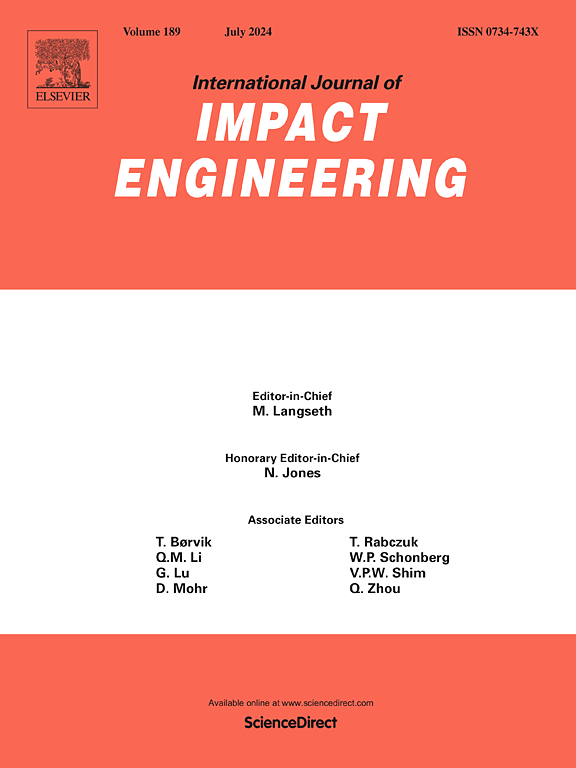Effects of steel fiber content and type on projectile impacting resistance of UHPC: Mesoscale analysis
IF 5.1
2区 工程技术
Q1 ENGINEERING, MECHANICAL
International Journal of Impact Engineering
Pub Date : 2025-01-17
DOI:10.1016/j.ijimpeng.2025.105228
引用次数: 0
Abstract
Ultra-high performance concrete (UHPC) has significant potential for protective engineering applications against weapon strikes. Concerning the projectile impacting resistance of UHPC with various fiber configurations, a mesoscale analysis method regarding UHPC as a two-phase composite materials of steel fibers and the cementitious matrix was firstly developed from the following aspects: (i) a random fiber generation program was proposed to model the distribution of steel fibers in the cementitious matrix; (ii) the Riedel-Hiermaier-Thoma (RHT) model parameters for the cementitious matrix were determined and validated by a series of quasi-static and dynamic mechanical tests; (iii) an implicit modeling method for the bond-slip behaviors of steel fibers with different types was developed and validated through single-fiber pull-out tests. Secondly, the developed mesoscale analysis method was comprehensively validated by predictions of the quasi-static and dynamic mechanical properties of UHPC with various fiber contents and types. Subsequently, mesoscale simulations of the projectile penetration and perforation on UHPC targets demonstrated the superiority of developed method in capturing the dynamic responses and failure patterns of UHPC targets, as well as the bridging behavior of steel fibers in the penetration process. Finally, the influence of fiber content and type on the projectile impacting resistance of UHPC were discussed. It was found that the addition of steel fibers had a significant restriction effect on the cratering damage of UHPC and a relatively slight effect on the terminal effects of projectile. Considering the projectile impact resistance, workability, and cost, the incorporation of micro-straight steel fibers with a volume fraction of 1.75 % and 1.5 % was recommended for UHPC under projectile penetration and perforation, respectively. The present work provides a reliable pathway to assess the ballistic impact resistance of UHPC with various fiber parameters.
求助全文
约1分钟内获得全文
求助全文
来源期刊

International Journal of Impact Engineering
工程技术-工程:机械
CiteScore
8.70
自引率
13.70%
发文量
241
审稿时长
52 days
期刊介绍:
The International Journal of Impact Engineering, established in 1983 publishes original research findings related to the response of structures, components and materials subjected to impact, blast and high-rate loading. Areas relevant to the journal encompass the following general topics and those associated with them:
-Behaviour and failure of structures and materials under impact and blast loading
-Systems for protection and absorption of impact and blast loading
-Terminal ballistics
-Dynamic behaviour and failure of materials including plasticity and fracture
-Stress waves
-Structural crashworthiness
-High-rate mechanical and forming processes
-Impact, blast and high-rate loading/measurement techniques and their applications
 求助内容:
求助内容: 应助结果提醒方式:
应助结果提醒方式:


